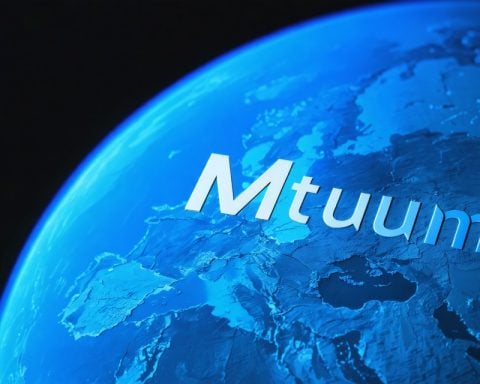The skies are about to get a lot more interesting! A groundbreaking drone, the PHASA-35, is redefining aerial surveillance.
Developed by BAE Systems, the PHASA-35 is a remarkable unmanned aerial vehicle (UAV) that recently completed a stunning 24-hour flight at an altitude surpassing 20 kilometers. This impressive feat places it in the lower stratosphere, allowing it to act almost like a pseudo-satellite. It effortlessly operates above traditional air traffic, demonstrating a unique capability that bridges the gap between conventional drones and satellites.
With a wingspan of 35 meters and powered by solar energy, the PHASA-35 offers sustainable and flexible surveillance options. During recent trials at Spaceport America in New Mexico, it not only showcased reliability but also landed in a condition suitable for quick reuse within two days, signaling its potential for rapid deployment in critical missions.
One of the standout features of this drone is its ability to carry an advanced intelligence and reconnaissance sensor that exceeds previous payloads, proving its strength in managing sophisticated equipment. BAE Systems has significantly enhanced its energy generation and storage capabilities, promising longer missions and more complex operations.
With a vision for operational readiness by 2026, the PHASA-35 is set to play a vital role in various applications, including border security, disaster response, and environmental monitoring, marking a new era in aerial technology.
PHASA-35: The Future of Aerial Surveillance is Here
Introduction
The emergence of the PHASA-35, a revolutionary drone developed by BAE Systems, is set to transform aerial surveillance and operational capabilities. With its unique features and impressive specifications, the PHASA-35 is poised to redefine how we approach surveillance from the skies.
Key Features
– High Altitude Performance: The PHASA-35 operates in the lower stratosphere, reaching altitudes over 20 kilometers. This allows it to provide surveillance capabilities similar to low-orbit satellites, yet with the operational flexibility of traditional drones.
– Solar-Powered Efficiency: Equipped with a 35-meter wingspan and powered entirely by solar energy, the PHASA-35 stands out as a sustainable option for long-duration flights. This solar capability not only enhances its environmental credentials but also extends its operational range without the need for extensive recharge setups.
– Advanced Payload Capacity: One of the critical advancements of the PHASA-35 is its ability to carry sophisticated intelligence and reconnaissance sensors. This development represents a significant leap from previous drone payload capabilities, enabling the management of more complex tasks and data collection.
Use Cases
The potential applications for the PHASA-35 are extensive:
– Border Security: With its ability to cover vast areas without the risk of interference from traditional aircraft, the drone can be pivotal in monitoring and securing national borders.
– Disaster Response: In the wake of natural disasters, the PHASA-35’s rapid deployment capabilities enable timely assessments and responses, providing crucial aerial support where ground access may be limited or dangerous.
– Environmental Monitoring: The drone’s high-altitude operation allows for comprehensive environmental data collection, aiding in climate research and conservation efforts by monitoring wildlife and natural resources.
Market Analysis
According to market insights, the demand for drones in security, surveillance, and data collection has been on the rise, with an expected growth trajectory powered by innovations like the PHASA-35. As industries increasingly rely on aerial technology for efficiency and data accuracy, the drone market is anticipated to expand significantly over the next decade.
Pros and Cons
Pros:
– High altitude and long-duration flight capabilities.
– Sustainable, solar-powered design.
– Advanced sensor compatibility.
– Rapid deployment and reusability.
Cons:
– Potential regulatory challenges regarding airspace use.
– High initial development and operational costs.
– Dependency on weather conditions for optimal performance.
Innovations and Future Predictions
The introduction of the PHASA-35 marks a significant advancement in UAV technology. As BAE Systems aims for operational readiness by 2026, the implications of its deployment could reshuffle existing frameworks in aerial surveillance. The combination of drone capabilities with satellite-like performance hints at future innovations in hybrid operational models within both military and civilian sectors.
Security and Sustainability Aspects
The PHASA-35 emphasizes sustainability through its solar power capabilities, aligning with the global push for greener technologies. Additionally, its high-altitude operational profile minimizes the environmental impact associated with conventional fuel-powered aircraft.
In terms of security, as drones become integral to monitoring and reconnaissance, ensuring secure operation protocols and safeguarding collected data will become paramount.
Conclusion
The PHASA-35 is not just a drone; it is a catalyst for change in aerial surveillance technology. With its innovative design, it exemplifies the future trajectory of UAV capabilities, setting the stage for enhanced security, disaster response, and environmental monitoring.
For further information, you can explore BAE Systems’ insights on UAV technology and its future impacts at BAE Systems.









